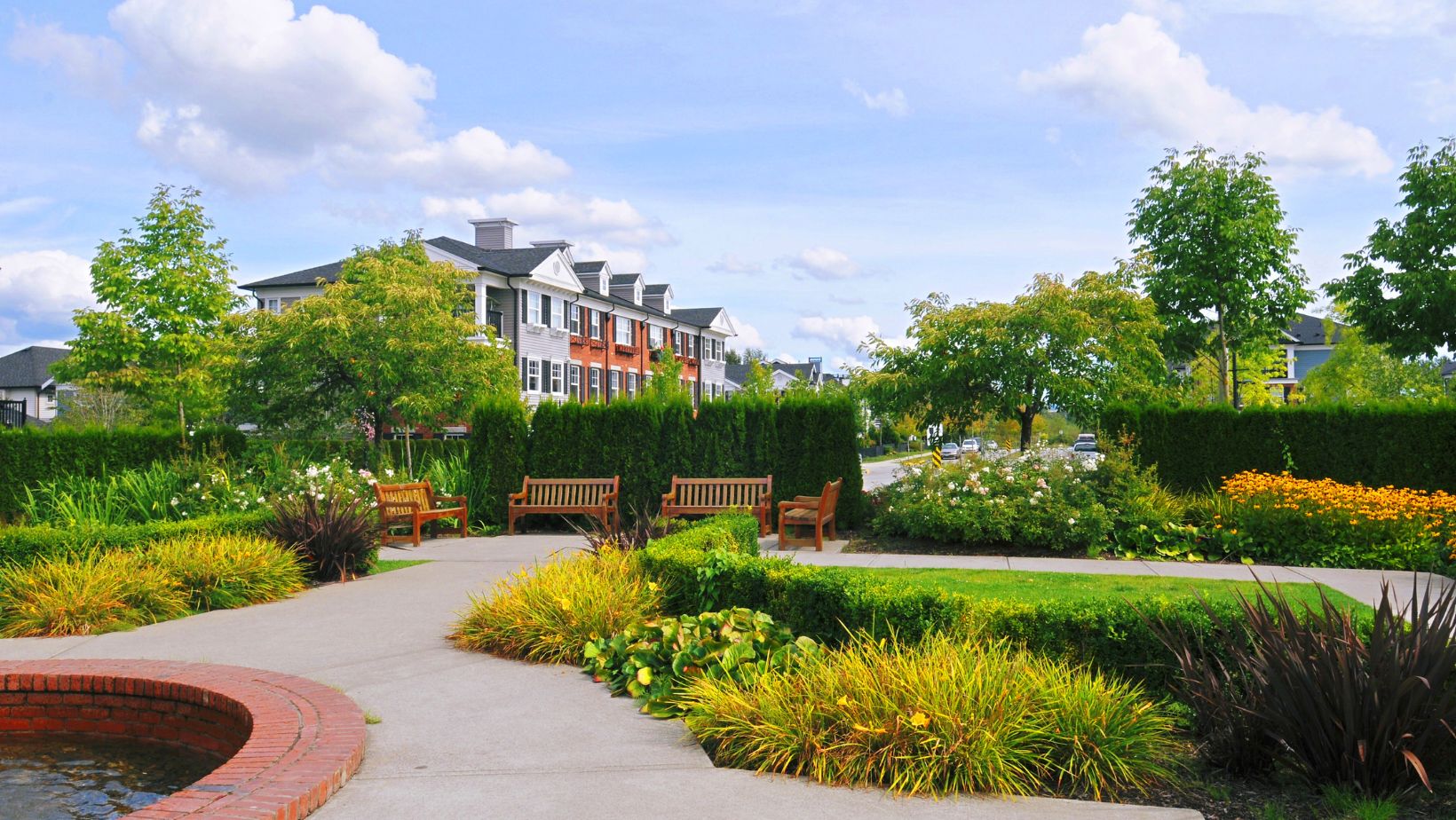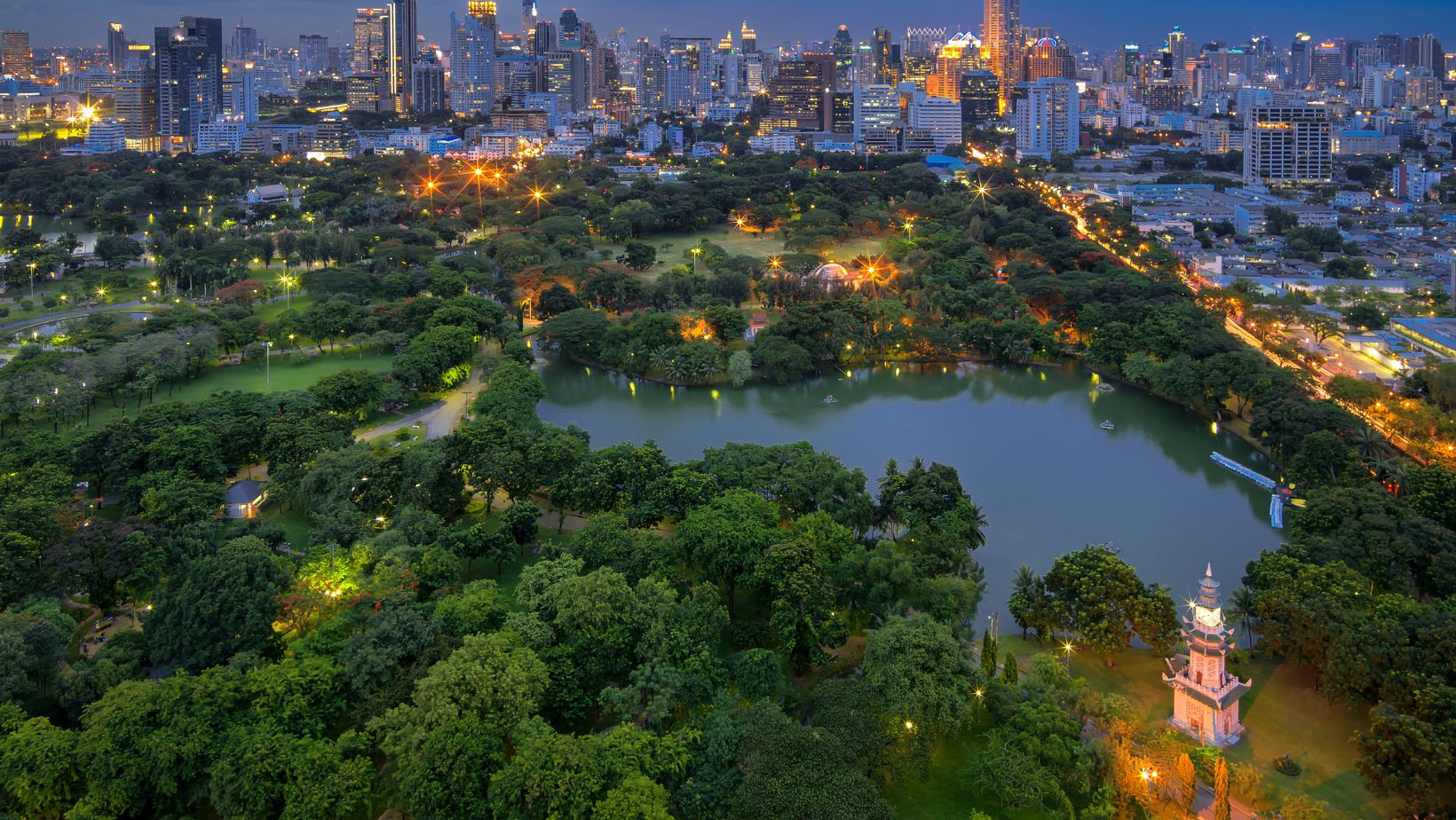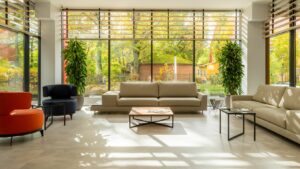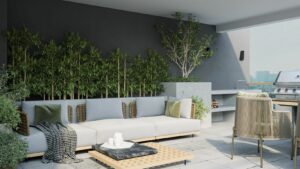Urban dwellers often find themselves surrounded by concrete jungles where skyscrapers and asphalt reign supreme. Yet amidst this gray landscape lies a powerful solution to many city problems – green spaces. These verdant oases serve as nature’s answer to urban stress offering a breath of fresh air in our increasingly cramped cities.
From pocket parks to sprawling urban forests green spaces aren’t just pretty additions to city planning. They’re essential components that transform concrete deserts into livable thriving communities. These natural havens boost mental health improve air quality and create vital habitats for urban wildlife while providing countless social and economic benefits to city residents.
Why are Green Spaces Important to Urban Areas
Urban green spaces encompass natural or landscaped areas within city boundaries that incorporate vegetation. These spaces include public parks, community gardens, green corridors, urban forests, wetlands, riverside areas, rooftop gardens.
Here’s a breakdown of common urban green space types:
- Public Parks: Large recreational areas with trees, grass fields, playgrounds
- Community Gardens: Shared spaces for growing fruits, vegetables, flowers
- Pocket Parks: Small green areas tucked between buildings or streets
- Green Corridors: Linear parks connecting different parts of the city
- Urban Forests: Dense tree coverage areas within city limits
- Green Roofs: Vegetation installed on building rooftops
- Rain Gardens: Planted depressions that collect stormwater runoff
- Green Walls: Vertical gardens integrated into building facades
The size distribution of urban green spaces varies across cities:
| Type | Typical Size Range | Examples |
|---|---|---|
| Pocket Parks | 0.1-0.5 acres | Paley Park NYC |
| Neighborhood Parks | 1-10 acres | Pioneer Park Seattle |
| Community Parks | 10-50 acres | Central Gardens Memphis |
| Regional Parks | 50+ acres | Golden Gate Park SF |
Modern urban green spaces integrate multiple functions beyond recreation. These areas serve as wildlife habitats, stormwater management systems, air purification zones, urban heat island reducers. Many incorporate sustainable design elements like permeable surfaces, native plant species, water-efficient irrigation systems.
The World Health Organization recommends a minimum of 9 square meters of urban green space per person. Cities achieve this through strategic planning that combines various green space types across different urban zones.
Environmental Benefits of Urban Green Areas
 Urban green spaces provide significant ecological advantages that contribute to sustainable city environments. These natural areas act as essential components in maintaining environmental balance within densely populated urban regions.
Urban green spaces provide significant ecological advantages that contribute to sustainable city environments. These natural areas act as essential components in maintaining environmental balance within densely populated urban regions.
Temperature Regulation and Heat Island Effect
Urban green spaces reduce city temperatures by 2-8°C through natural cooling processes. Trees create shade zones that block 60% of solar radiation while grass surfaces absorb 80% less heat than concrete or asphalt. Parks measuring 3-5 hectares generate cooling effects that extend up to 350 meters beyond their boundaries. Large urban forests decrease local temperatures through evapotranspiration releasing water vapor into the atmosphere. These cooling mechanisms combat urban heat island effects particularly during summer months when temperature differences between cities inner cores extend up to 12°C higher than surrounding rural areas.
Air Quality Improvement
Green spaces filter harmful pollutants from urban air through natural processes. A single mature tree removes 22 kilograms of carbon dioxide annually while producing enough oxygen for four people. Urban parks with dense vegetation capture 85% of airborne particulate matter including PM2.5 PM10 nitrogen dioxide sulfur dioxide. Trees along city streets reduce vehicle-related air pollution by 60% in adjacent areas. Extensive green networks in cities decrease ground-level ozone concentrations by 7% during peak summer periods.
Biodiversity Conservation
Urban green spaces support diverse ecosystems within city environments. Parks containing native plant species host 8 times more bird species 6 times more insect species than areas with non-native vegetation. Connected green corridors enable wildlife movement creating sustainable urban habitats for 45% of local species. City gardens provide essential pollinator habitats supporting 50 different bee species 40 butterfly species. Wetland areas in urban parks protect 80% of amphibian species while promoting genetic diversity among urban wildlife populations.
Health and Wellbeing Advantages
Urban green spaces create significant positive impacts on human health by providing environments for physical activity and mental restoration. These natural settings offer multiple pathways to improve public health outcomes in densely populated areas.
Physical Health Benefits
Regular access to green spaces increases physical activity levels by 48% among urban residents. Parks equipped with walking trails, exercise stations and sports facilities encourage cardiovascular exercise through activities like jogging, cycling and team sports. Studies show communities with abundant green spaces report 15% lower rates of obesity and 23% fewer cases of type 2 diabetes. Urban gardens and parks also improve respiratory health by filtering air pollutants, with residents living near green areas experiencing 35% fewer asthma-related hospital visits. Children who spend time in green spaces develop stronger immune systems and show improved motor skills development compared to those with limited access to nature.
Mental Health and Stress Reduction
Green spaces reduce mental fatigue and stress levels in urban populations by 32% through exposure to natural environments. Research demonstrates that 20-minute walks in park settings lower cortisol levels by 21% and decrease anxiety symptoms. Urban residents living within 300 meters of green spaces report 40% better mental wellbeing scores compared to those without nearby access. Contact with nature improves attention spans by 20% and enhances cognitive function in both adults and children. Hospital patients with views of gardens recover 15% faster and require 22% less pain medication than those without natural views. Parks and gardens also foster social connections through community activities, reducing isolation and improving overall psychological resilience.
Social and Community Impact
Urban green spaces transform cities into vibrant social hubs that foster community connections through various recreational activities. These areas serve as catalysts for social interaction while promoting physical health mental wellness.
Recreation and Leisure Opportunities
Green spaces provide diverse recreational options for city residents of all ages. Public parks offer dedicated areas for sports activities including basketball courts tennis facilities playgrounds. Urban gardens create opportunities for hobby cultivation educational programs nature exploration. Studies show that neighborhoods with accessible green spaces experience a 55% increase in outdoor recreational activities. Parks support multiple activities simultaneously with designated zones for:
- Sports fields supporting organized leagues amateur games
- Exercise stations featuring outdoor fitness equipment
- Children’s play areas with age-appropriate structures
- Walking trails connecting different activity zones
- Picnic spots equipped with tables shelters
Community Engagement and Social Cohesion
Green spaces strengthen neighborhood bonds by creating shared spaces for social interaction. Research indicates communities with parks experience 83% higher levels of social connection among residents. These spaces facilitate:
- Cultural events including outdoor concerts festivals
- Community gardens promoting intergenerational interaction
- Group exercise programs bringing neighbors together
- Educational workshops on environmental topics
- Volunteer opportunities for park maintenance beautification
Local green spaces increase property values by 20% create gathering places for diverse community groups foster partnerships between residents organizations. Studies demonstrate neighborhoods with active green spaces report 48% lower crime rates enhanced feelings of safety improved social trust.
Economic Value of Green Spaces
Urban green spaces generate substantial economic benefits for cities through increased property values, enhanced tourism appeal, and strengthened local business environments. These natural areas create measurable financial returns on investment for municipalities and property owners.
Property Value Enhancement
Properties adjacent to parks and green spaces command 8-20% higher values compared to similar properties without green space access. Residential areas within a quarter-mile radius of well-maintained urban parks experience an average property value increase of 15%. Analysis of real estate transactions shows homes near community gardens sell for $9,000-$18,000 more than comparable properties. Urban tree canopies add 3-7% to home values, with mature trees contributing up to $10,000 to individual property assessments. Commercial properties near green spaces maintain 7% higher rental rates due to increased foot traffic and aesthetic appeal.
Tourism and Local Business Growth
Green spaces attract tourists and boost local business revenue through increased visitor spending. Central Park in New York generates $1.4 billion in annual economic activity through tourism. Urban parks hosting events and festivals increase local business revenue by 25-45% during peak seasons. Restaurants and cafes near green spaces report 30% higher customer traffic compared to similar establishments in other areas. Business districts incorporating green elements experience 12% higher retail sales. Public gardens and botanical spaces attract 300,000+ annual visitors on average, contributing $15-25 million to local economies through related spending on accommodations, dining, and retail.
What Are Urban Green Spaces
Urban green spaces stand as vital components of modern city planning transforming concrete landscapes into livable environments. Their impact extends far beyond aesthetic appeal creating measurable benefits for public health environmental sustainability and economic growth.
The integration of parks gardens and natural areas into urban settings proves essential for building resilient cities that support both human wellbeing and ecological balance. As cities continue to expand investing in green spaces isn’t just an option – it’s a necessity for creating sustainable urban environments that will thrive for generations to come.
The evidence clearly shows that urban green spaces deliver significant returns on investment through improved public health stronger communities enhanced property values and environmental protection. These natural havens represent one of the most effective solutions for creating healthier more sustainable cities.


